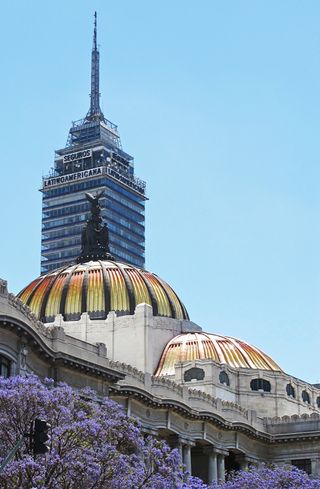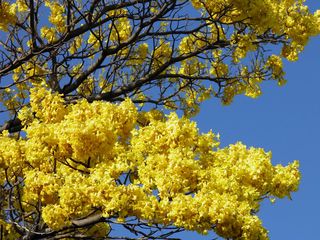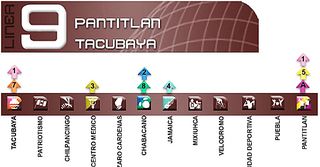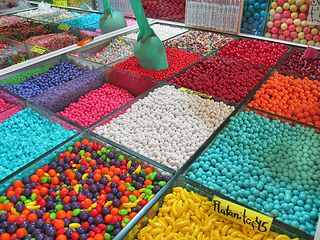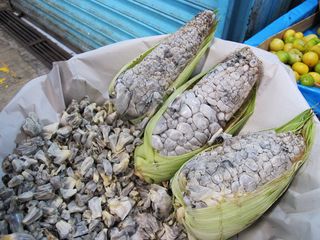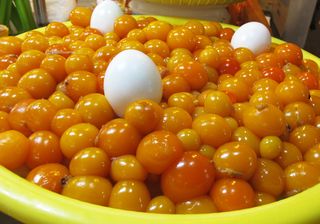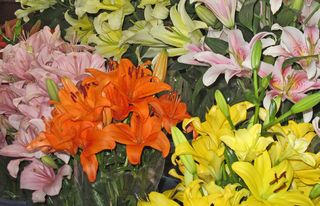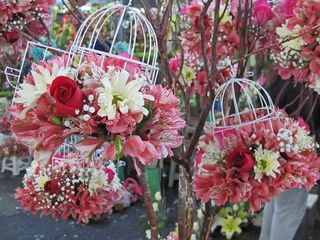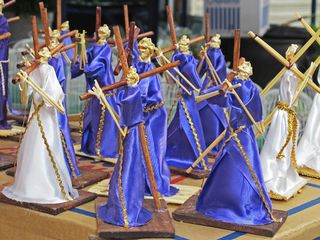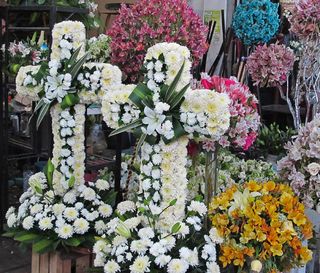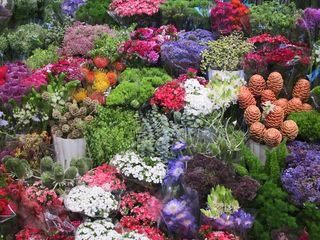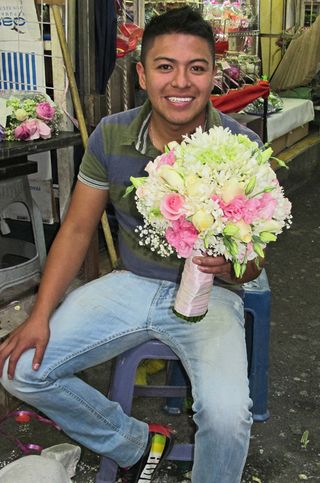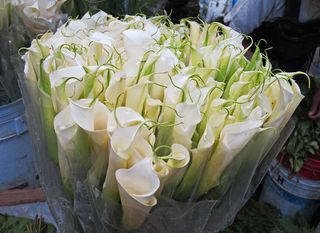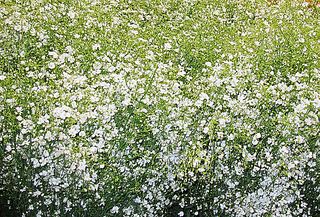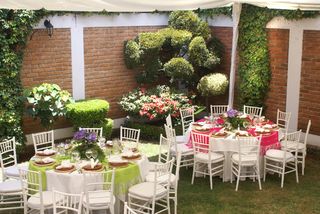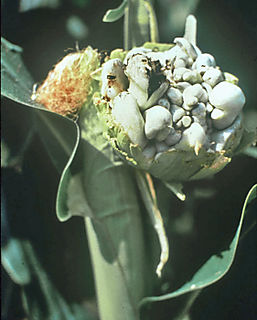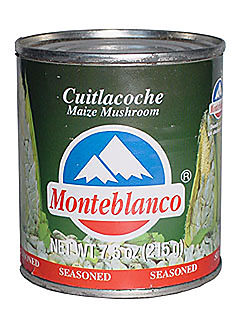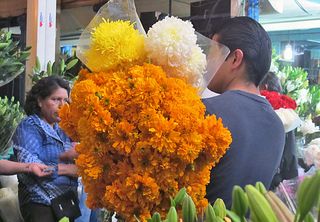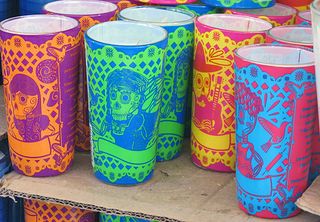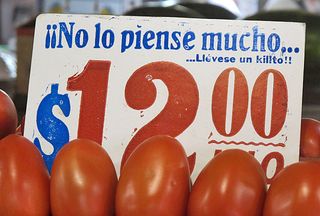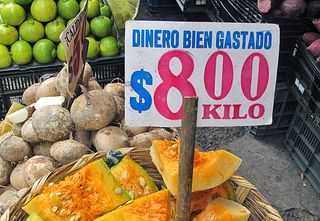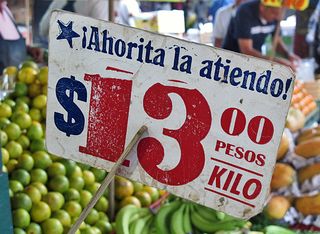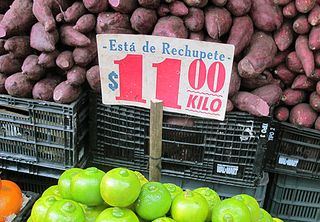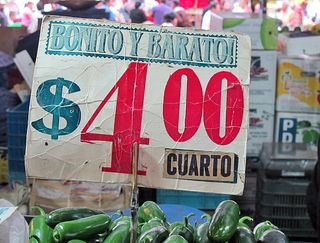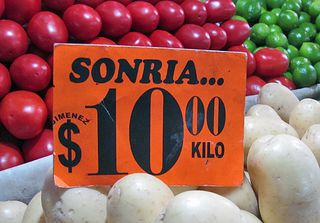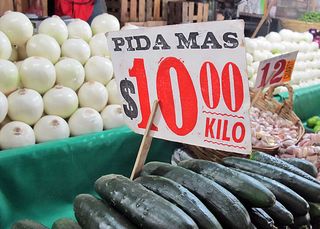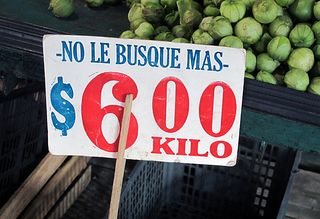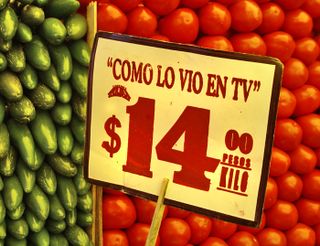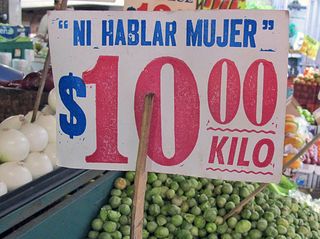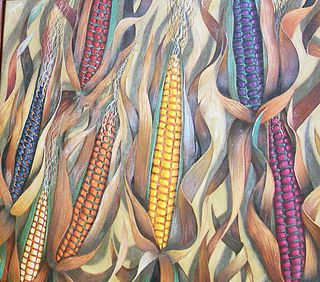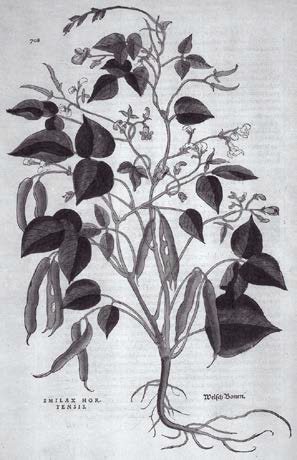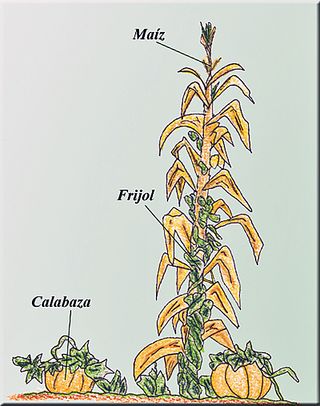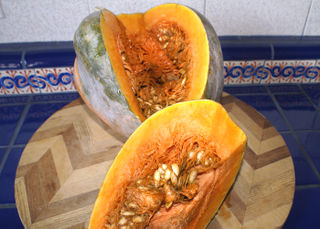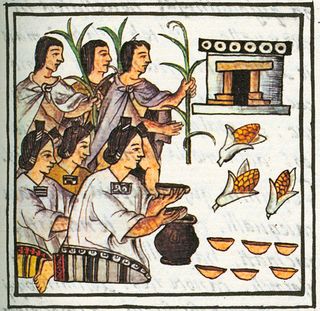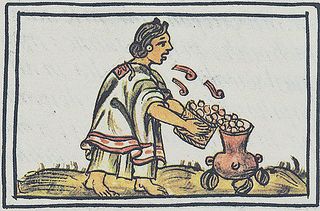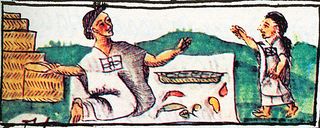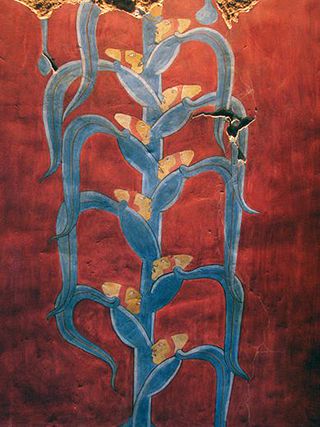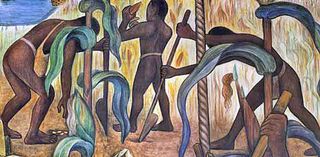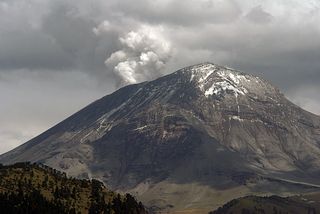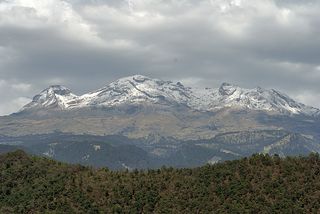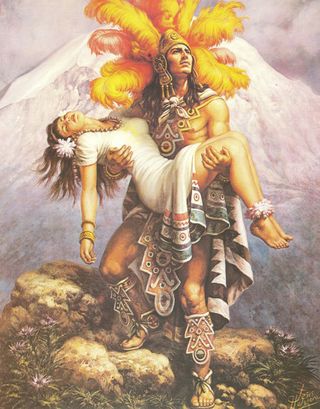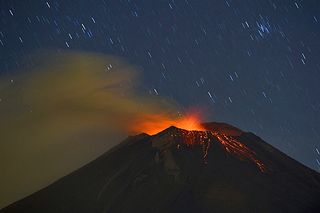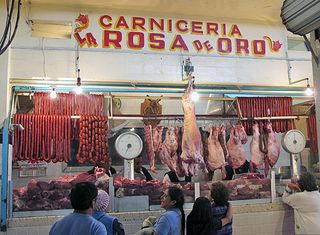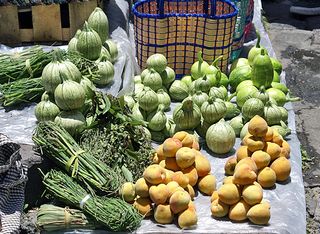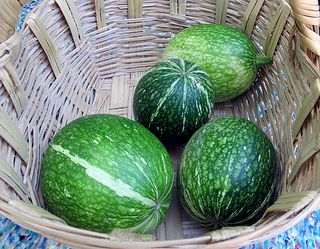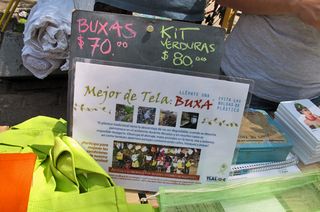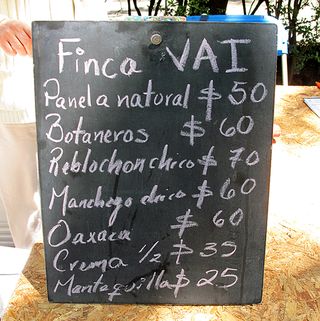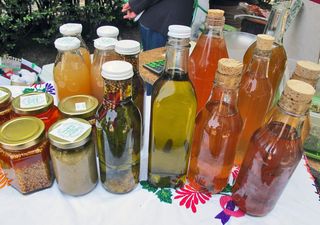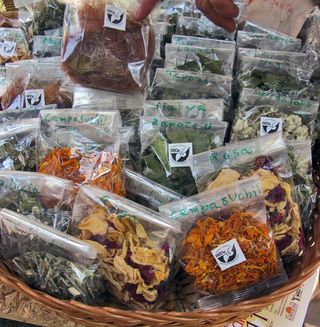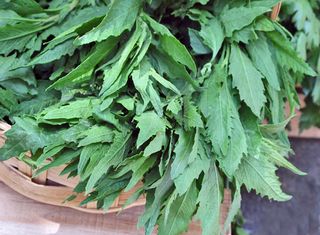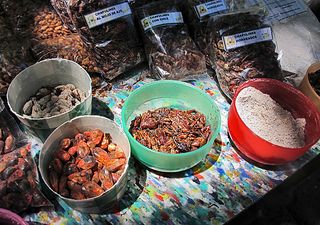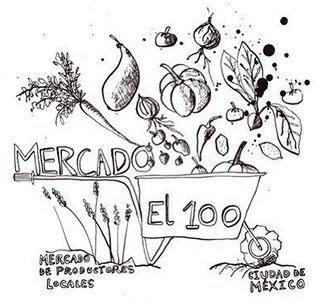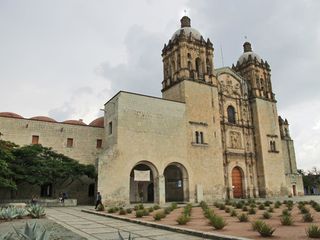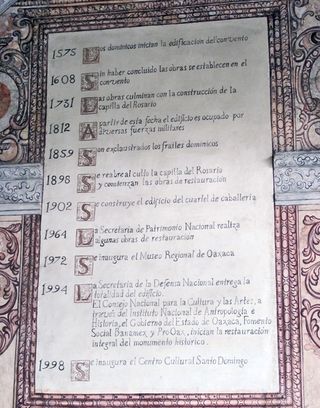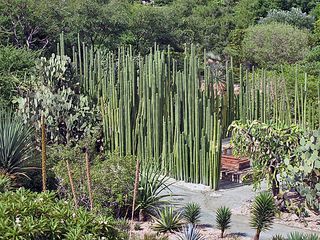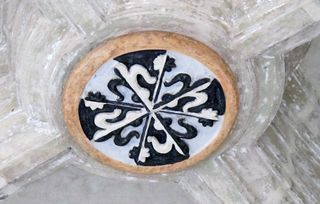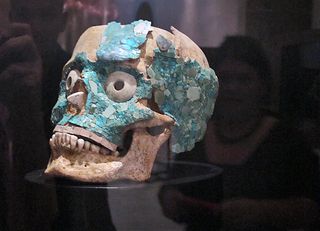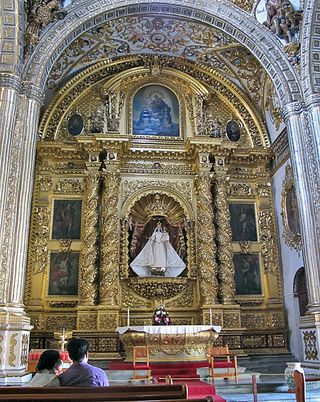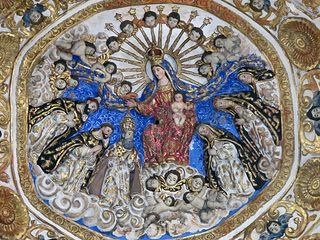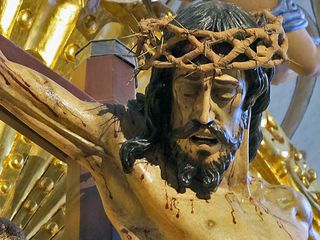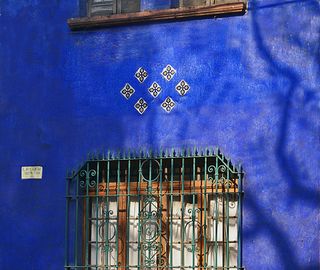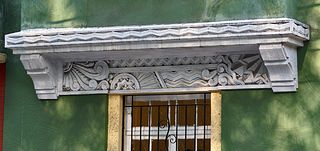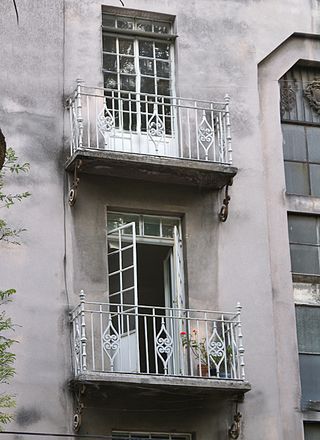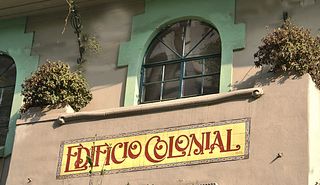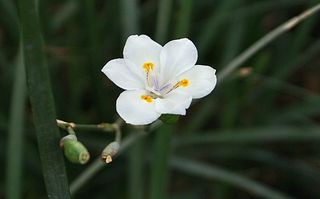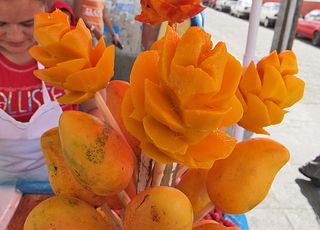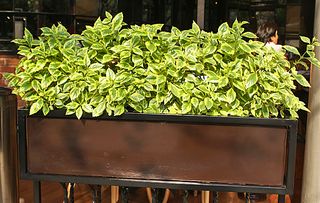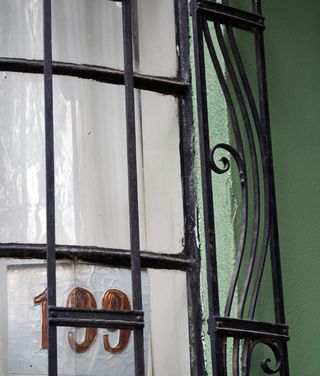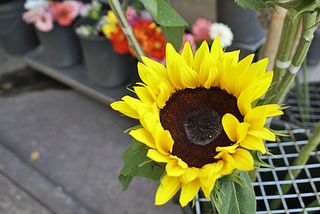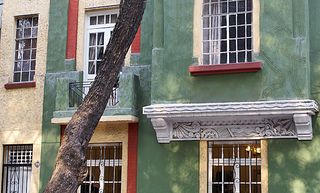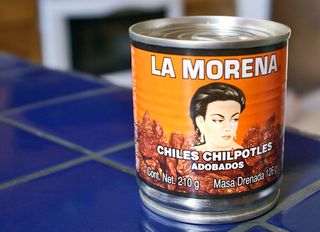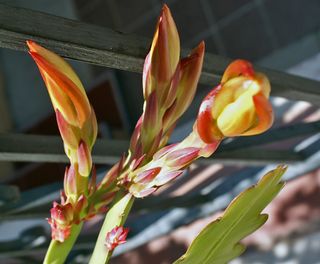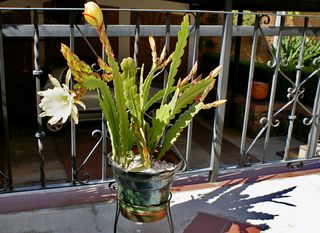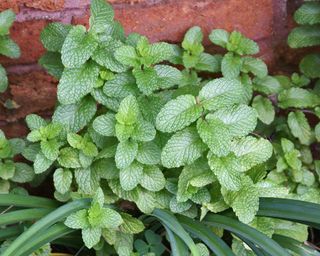
Fresh hierbabuena (mint) growing in a Morelia friend's garden.
The cuisines of Mexico–and there are many–are a fantastic amalgam of indigenous corn-based food preparations with a heavy overlay of Spanish ingredients, a strong influence of Moorish flavors, and a lagniappe of French artifice from the mid-19th Century. There is no one cuisine in this big country, although some popular dishes are found in every region. Not every cook prepares enchiladas with the same list of ingredients; tacos, although ubiquitous in Mexico, can be different at every crowded taco stand.
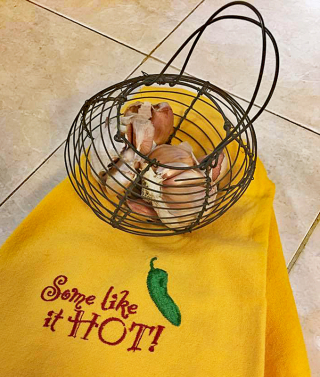
Mexico Cooks! stores garlic in this 3" diameter wire basket, hanging from a cup hook on the side of a cupboard. Circulating air keeps the garlic fresh for quite a while.
Many of the herbs and spices that you use in your own North of the Border kitchen are also used in the Mexican kitchen. Garlic, cinnamon, oregano, and thyme are in widespread use here. Cumin, cloves, tarragon, and mint show up frequently. Lemon grass, which we usually think of as an ingredient in Thai or Vietnamese dishes, is commonly grown in many parts of Mexico and is used to make tea.
A good part of the differences in the regional cuisines of Mexico is each region's use of herbs. Some of those herbs are completely unknown to those of us whose familiarity with Mexican food stops with Pepe's Taco Hut on Main Street, USA. Pepe, whose mother's family emigrated to the USA from the Mexican state of Hidalgo, prepares the restaurant's platillos fuertes (main dishes) from recipes passed down from his abuelita (grandmother), who lived for 97 years in the same Hidalgo village. He's adapted those recipes to include the ingredients he can find in the States and to the palates of his customers.
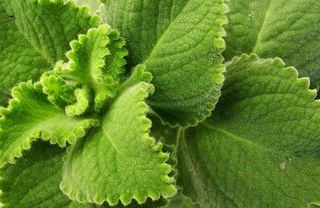
This herb, a large-leafed, strong-flavored variety of oregano called orégano orejón (big-ear oregano), is unusual even in Mexico. Mexico Cooks! once had a pot of it, but it has unfortunately gone to the great beyond. I'd love to have another pot of it.
Oregano is quite common in Mexican cooking. It can be used either fresh or dried. A small pot of oregano in a sunny spot of your kitchen garden will usually be plenty for all your cooking needs. If you live in a place where the growing season is short, harvest oregano periodically through the summer, tie the stems in small bunches, and hang upside down in a dark place to dry. It dries very fast and retains most of its aroma and flavor. Discard the stems and store the crisp leaves in an airtight, lightproof containers.
Because the growing season in most parts of Mexico is almost year-round, I can always cut a fresh sprig of oregano or two to use when making spaghetti sauce, pescado a la veracruzana, (fish prepared in the style of Veracruz) or other tomato-based sauces. I wash the sprigs and either strip off the leaves into the pot or put the entire sprig into the sauce for seasoning.
The Mexican kitchen uses a wide range of other herbs. The Spanish names read like a mysterious litany: albahaca, epazote, estragón, hoja santa, hierbabuena; comino, clavo, and romero. In English, they are (in order) basil, wormweed, tarragon, holy leaf, mint, cumin, cloves, and rosemary.
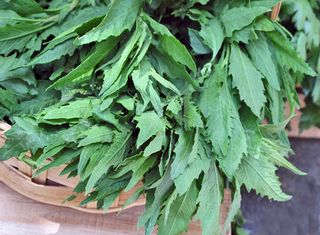
Epazote grows wild all over Mexico and in parts of the United States. Several months ago I paid ten pesos at a tianguis (street market) for a pot of it to plant in my garden. As I was carrying the pot home, my neighbor, Doña Mago, saw me and exclaimed, "Porque compraste eso?" ("Why did you buy that?").
"Well, you know" I answered, "I like it to cook in my beans, to make quesadillas, for the flavor—"
"No, no, no, amiga!" she cried, and pointed a finger toward the corner. "It grows up through the cracks in the sidewalk just down the street. You should have asked me to show you where to find it. You could have saved your money. When I want some, I just go over there and cut a piece." It's true. When I was out for a walk the next day, I noticed for the first time the epazote plant she had mentioned.
Regardless of my profligate waste of ten pesos, I do like to cook a big sprig of epazote in a pot of beans. The herb is originally from Mexico and Central America. The indigenous language name that was given to epazote is derived from the Nahuatl words 'epti' and 'zotle': the combined word means 'skunk sweat'. As you can imagine, the herb has a very strong and distinctive flavor. According to Mexican kitchen lore, epazote also has anti-flatulent properties, which is why it might be smart to add it to the boiling bean pot.
Pescado en hoja de plátano (fish cooked in banana leaf). Restaurante San Miguelito, Morelia, Michoacán.
Other plants used to give uncommon seasonings to the cuisines of Mexico are hoja de plátano (banana leaf) and hoja de aguacate (avocado leaf). You won't be able to run right out to your nearest Safeway or HEB store to find these. If you live in an area where there's a large Asian population, you'll find packages of frozen banana leaves in any well-stocked Asian food market. As for avocado leaves—well, if you or your neighbor are lucky enough to have an avocado tree, you can just go pick some. Unfortunately there's no seasoning substitute for them.
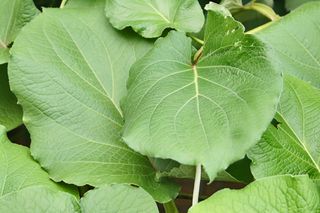
Hoja santa (holy leaf) is also known as acuyo.
Hoja santa is used extensively in Mexican cooking. It's a large, heart-shaped leaf that comes from a tall, bushy plant—a plant that will take over the garden space that it's planted in and then some, if you let it. It's a native of Mexico and has medicinal properties as well as seasoning uses. The flavor of hoja santa is reminiscent of licorice, and it combines exceptionally well with fish or chicken.
Banana leaves are used for wrapping meats to prepare barbacoa (southeastern Mexican barbecue, cooked in a pit) and for wrapping and flavoring tamales from the Yucatán Peninsula in far southeastern Mexico. Dried avocado leaves are also used as a flavoring agent; like hoja santa, they have a mild taste similar to that of licorice.
As you can see, Mexican home cooking is far more than tacos and enchiladas. The more unusual kitchen herbs of Mexican cuisine add intense flavor without adding that blast of spiciness that we so often mistake for the only seasoning of Mexico.
Looking for a tailored-to-your-interests specialized tour in Mexico? Click here: Tours.
